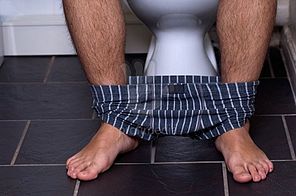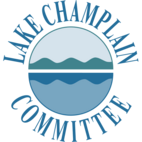What To Do With Waste?
June 2015

Everybody poops. That's no surprise. We all sit on a toilet and deposit our wastes and then it goes "away". Away might be a septic tank in the yard or a wastewater treatment facility in town but, in either case, the wastes accumulate and must later be disposed of. Exactly how should we deal with these accumulations of human waste?
The end result of waste treatment is a semi-solid residual material that must be then go to a final resting place. People trying to find a means to get rid of this material call it biosolids and tout the rich potential of the material as a fertilizer or soil amendment. People who don't want the stuff anywhere near them call it toxic sludge and emphasize the contaminants. I will call the material 'mire' for this article, but it's all the same stuff.
There are three principal means to manage mire. It can be incinerated, which reduces the volume by about 80%. It can be brought to a landfill, though not all landfills accept it. Or it can be land applied as a fertilizer or soil amendment. Each option has benefits and drawbacks.
In New York, a 2010 survey, of publicly-owned treatment works said that landfilling was the most popular management option for mire accounting for 52% of it. ‘Beneficial uses’ accounted for 30% and incineration 17%. Beneficial uses, as defined by the survey, included direct land application, composting, chemical stabilization, and heat drying. Of those uses, direct land application requires the least pre-treatment. Once mire has been composted, stabilized or dried it can be sold as a commercial product but would also eventually be land applied. The 2010 results represented a decline in ‘beneficial use’ compared to 2009, a change driven by costs and ‘other issues’.
Vermont also landfills most of its mire. As of 2013 about 60 percent went to a landfill in Coventry. Seventeen municipalities land applied. Most of the remainder went to out-of-state incinerators.
Landfilling mire is expensive, but seems to be more publicly acceptable than land application. Landfills have liners and are regulated so that any contaminants in the mire are kept in place. Proponents of biosolids lament the waste of a potentially useful product. They point to the limited available space in landfills and argue that it should be reserved for products with no other option.
Incineration is also expensive. It has the advantage of greatly reducing the volume of the mire, but the final ash still needs to find a use. In the incineration process some organic pollutants are broken down, though heavy metals become more concentrated. There is a risk of releasing contaminants by air so smokestack emissions are regulated. Incineration only makes sense when there is a sufficient volume of mire, so facilities must serve large cities or regions.
Land application of mire is the most controversial option. It is the lowest cost option and returns nutrients to the soil. As Victor Hugo wrote, ““All the human and animal manure which the world wastes, restored to the land instead of being cast into the water, would suffice to nourish the world.” However, neighbors often object due to concerns about contaminants in the waste.
Even proponents of land application concede that some contaminants remain after wastewater treatment. They disagree about whether the concentrations remaining are high enough to be of concern. Mire must meet EPA and state standards before it can be land applied. The EPA regulations, first implemented in 1993, define maximum concentrations of undesirable metals and pathogens, but EPA does not regulate organic contaminants. Research by the USGS suggests that some organic contaminants do persist and can get into the ecosystem via land application of mire.
In the long run, land application in compliance with approved nutrient management plans is probably the best option for the environment, at least in areas with sufficient land and low population densities. EPA should do more to ensure to provide guidance about treatment for and maximum acceptable levels of organic contaminants. However, it would still be very difficult to overcome the public perception problems. Everybody poops, but nobody wants to think about it after it has gone ‘away’.
Lake Look is a monthly natural history column produced by the Lake Champlain Committee (LCC). Formed in 1963, LCC is the only bi-state organization solely dedicated to protecting Lake Champlain’s health and accessibility. LCC uses science-based advocacy, education, and collaborative action to protect and restore water quality, safeguard natural habitats, foster stewardship, and ensure recreational access.
Get involved by joining LCC using our website secure form (at www.lakechamplaincommittee.org), or mail your contribution (Lake Champlain Committee, 208 Flynn Avenue - BLDG 3 - STUDIO 3-F, Burlington, VT 05401), or contact us at (802) 658-1414, or lcc@lakechamplaincommittee.org for more information.
